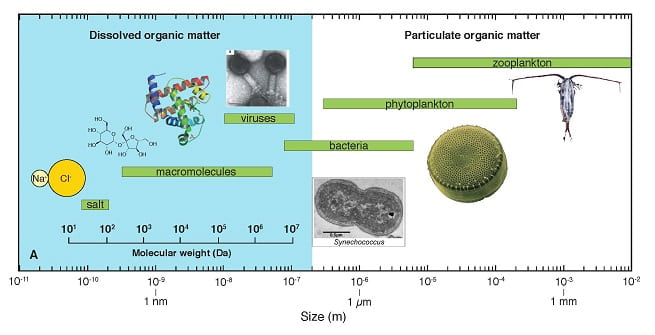In ocean carbon recycling, size matters
The journal Nature Geoscience published a study today from UCI Earth system scientists on the size-reactivity continuum in the ocean carbon cycle. Detrital (not living) organic matter is a very large reservoir of carbon stored in the world’s oceans; it’s roughly equal in size to the amount of carbon dioxide in Earth’s atmosphere. Marine organic matter spans a spectrum of sizes from whales measuring in tens of meters to small, dissolved molecules measuring 1 nanometer to hundreds of angstroms. In between are fish, zooplankton, phytoplankton and sinking particles, small bacteria, viruses and large, dissolved organic molecules. The UCI researchers found that when it comes to how quickly dissolved organic molecules are produced in the ocean – thus having a beneficial effect on the global carbon cycle (from a climate change perspective) – size matters.

“Our work represents a significant expansion of the size-reactivity hypothesis by showing that the radiocarbon age and carbon-nitrogen ratios are quantitatively linked across the entire marine organic matter size spectrum, from particles to small molecules, and for the entire Pacific Ocean,” said the study’s lead author, Brett Walker. Co-author Ellen Druffel, the Fred Kavli Chair of Earth System Science, said: “This work helps us understand how carbon is recycled in the ocean. This is important because the ocean is where most of the extra carbon dioxide that humans are putting into the air will be stored.”